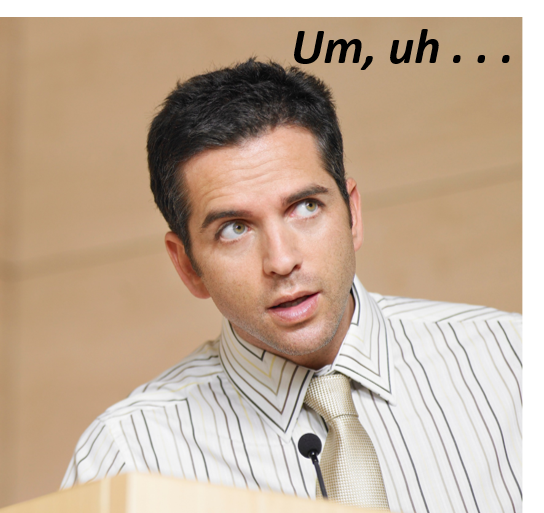“Well, that was awful,” said Robert, a technical expert for an energy company, as he looked up from my iPad. He had just finished listening to my on-the-spot recording of his speech introduction.
“I had no idea I said so many ‘ums.’”
In the first 3 minutes of his speech introduction, he had said “um” 30 times.
Robert’s company had hired me to work with him on an upcoming conference presentation. One of their biggest concerns was that Robert’s excessive use of “ums” would reflect poorly on the company. Robert was more concerned that this small, but frequent speech disfluency would damage his credibility as an expert.
Fast forward 10 minutes. Robert looked up from the iPad again, smiling. He had just watched himself give his 3-minute speech introduction with only 3 “ums.”
How did Robert so quickly decrease his “um” frequency?
The secret: a can of Coke.
After the first 3-minute practice of his introduction, I had him repeat it, but with one critical change. Every time he said “um,” I hit my half-drunk Coke can with a pen. At first every time I hit the can, Robert would cringe, and get flustered. But, soon, he just paused instead of saying um, to avoid the irritating sound. Then I had him give his introduction a third time, recording again on my iPad. This time I didn’t hit the Coke can. He only had 3 ums. Success! A few ums are not that noticeable, and typically not worth spending time to eliminate completely. Robert would be a credible expert presenter and would represent his company well.
If you want to reduce your ums, or filler words, you can do so both alone and by enlisting others to help you.
Top 3 Ways to Reduce Filler Words:
1. Record, Listen, Count, Repeat.
a. Record. Use a voice memo app, or even your camera video app on your cell phone (face down, if you don’t want a video) and record yourself speaking for a couple of minutes. You can record a presentation practice, or just pick a topic. Here is a sample topic: Tell me about your most memorable vacation.
b. Listen to the recording and count your disfluencies and filler words. Pick the worst 1-2 offenders to start, such as ums and uhs. How many did you get?
c. Repeat the process, and now that you have greater awareness, try to catch yourself before you say the filler word, and replace it with a pause (tip: close your mouth while you pause. You can’t say filler words if your mouth is closed). It may seem like an awkwardly long silence at first, but that is OK. You are trying to replace a habit with another habit.
2. Enlist others to help:
a. Get a family member, friend or coworker to listen to you speak for a short time and ask them to knock on a table (or hit a soda can with a pen) every time you use a filler word, such as um or uh, to give you immediate feedback. Alternatively, you could have an “Um jar” and every time some one catches you saying “Um or uh” you pay a fine into the jar.
b. Join a Toastmasters club. Many clubs will have a member count filler words and give a report at the end of the meeting.
3. Use a public speaking app
a. Orai—This app (demo video) will give you instant feedback on filler words, pace, energy, and speech clarity, plus you can read a transcript and playback your recording. You also get some lessons with exercises, and more. The app is free, but you only get 15 minutes of recording time before you need to upgrade to a paid account ($9.99/month). Take advantage of the free time, and then decide if you want to use it regularly. (link for more information and to download the app)
b. LikeSo—This app, which also gives you feedback on filler words, isn’t as functional as Orai (and it is only available for iOS). It does NOT track ums and uhs. If you have mostly conquered ums and uhs, consider getting this app to reduce other filler words (when I used it for a 1-minute impromptu talk, it caught one “you know” and one “actually,” fillers I weren’t aware of!) This app is not free, but only $4.99 with no subscription (link for more information and to download the app)
Reduction, not necessarily elimination, is the goal! By reducing your filler words, you can sound more confident and credible.
Learn to be a Confident Speaker! Take Diane’s Online Course, No Fear Public Speaking: Look, Sound and Feel Confident!

